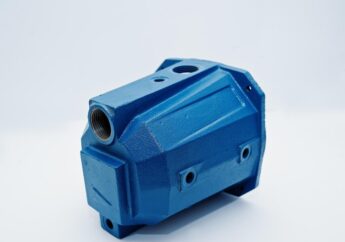Get a Snapshot of Your Business with an ODS
by Abdul Aziz Mondal Technology Published on: 19 January 2021 Last Updated on: 26 December 2024

Today having an operational data store (ODS) can influence the profitability of a business due to its ability to enable better decision-making. An ODS is a central database that offers a snapshot of the latest data from a variety of transactional systems. This helps facilitate operational reporting, which can make a real difference to the return on investment of a business.
Reporting on operational data in the Operational Data Store relies on the fact that the integrated tables contain the most recent and relevant snapshot of the business. The contents of an ODS can change from one moment to another and this makes it extremely useful for operational queries about the current state of the business, such as “how many orders did we process this morning?”
What is an Operational Data Store?
An ODS is able to consolidate data from different systems, different sources, and even from different locations. It focuses on operational requirements of business processes and implementing an offers a business integrated, current, operational data.
An ODS can act as an intermediate stage between data sources and a data warehouse. It is more like a data lake than a data warehouse, although it is much smaller and only stores structured data. It helps to deal with the disadvantage of a data warehouse, which is the fact that it does not contain the most up-to-date data or the most recent snapshot of current operations. With an ODS, businesses can get that up-to-date snapshot.
Setting up an Operational Data Store
Setting up an ODS means being able to replicate data from sources to a central repository. The data replication process is called ETL, which stands for extract, transform and load.
The ODS is rather like an ETL staging area. A staging area is basically a landing ground where data can be transformed in preparation for loading it into the data warehouse. In this way, the business analysis tools that need data closer to real-time can query the ODS data as it is being received from the various source systems.
While the ETL process applies data transformations, which can be time-consuming, the ODS makes the raw data available to business intelligence tools for analysis. The Operational Data Store only provides access to granular, current, non-aggregated data. This means that the transactional systems aren’t stressed with queries the server is not configured to handle.
Applications of an ODS
When running a business, business intelligence tools are used to analyze data. Business intelligence is basically a framework that allows businesses to transform data into information and information into actionable insights.
Whereas a data warehouse contains historical data, an ODS is always up-to-date and presents the most recent snapshot of data elements. This means it has great relevance when it comes to obtaining insights into business operations.
Consolidating data
When isolated business systems feed into the Operational Data Store, it means that reporting can be more holistic than when relying only on the individual systems. Say, for example, an online store has a billing system recording customer information and a transaction system that tracks customer purchases as they happen. The ODS contains both sets of information and the fact that they are no longer isolated in separate systems increases business efficiency.
In a bank, the Operational Data Store may contain account balances for each checking account from the account checking system as well as a balance for every savings account from the savings account system. The ODS user is able to get a complete profile for the customer in one place.
Real-time operational analysis
Users are able to query the ODS for a live operational view as it stores a snapshot of current data. It is highly volatile and holds very recent versions of business data. Combining it with the right business intelligence tools enables tracking of orders, monitoring of customer activity, managing logistics, and much more. For instance, using AI-powered software to predict sales can enable the creation of far more realistic targets.
Troubleshooting
An up-to-date view into operations makes it much easier to diagnose issues quickly and deal with them. For example, when a user creates an order on an e-commerce system, a corresponding order will appear on the logistics system. However, an integration error could mean it has the wrong details. Without an ODS, this could result in delivery delays. As the ODS has both versions of the data, the problem can be quickly spotted and fixed before the delivery goes astray.
System integration
An ODS provides a platform for the flow of data between systems. It deals with current operational data and continuously overwrites data. By working with current and integrated operational data, businesses can increase efficiency. For example, building certain time-sensitive business rules on the ODS means that a data change in one system can trigger a corresponding action in another system.
A smart ODS
A traditional ODS has various limitations such as a lack of ability to scale and an inability to support applications that need low latency. If multiple users access the ODS, this affected performance. Speed, flexibility, and scalability are essential in a new world of connected devices. The traditional ODS is therefore changing to meet these requirements. It is possible to augment a traditional ODS to offer the benefit of having the most recent snapshot of business operations.
A final word
An ODS is an authoritative source of operational data. It supports tactical decision-making that can make a real difference to the profitability of a business. Credit card companies can detect and stop fraud as it occurs, a transportation company can reroute vehicles to avoid traffic blockages, and online retailers can communicate special offers based on the behavior of a customer while browsing.
As operational data stores offer more flexibility and agility for running business operations, they are a smart choice for companies wanting to upgrade their capabilities and improve resilience. An ODS can improve the bottom line of any business and give it a chance to stand out from the competition.
Read Also:




































































































